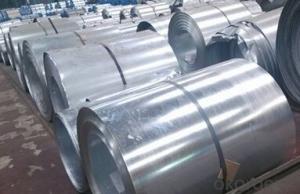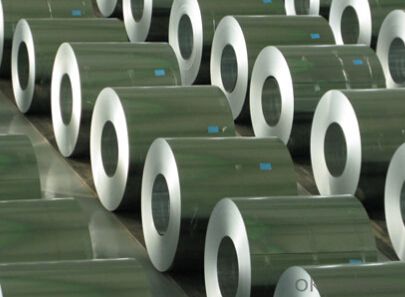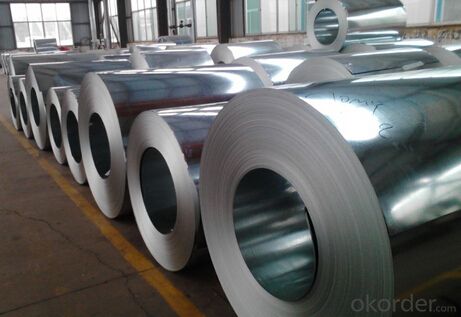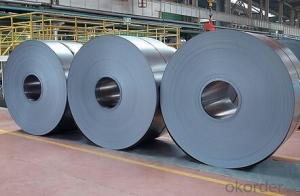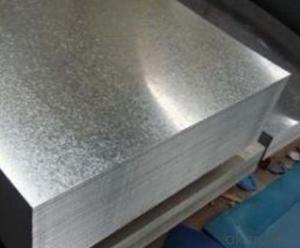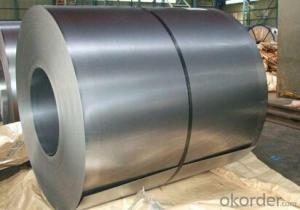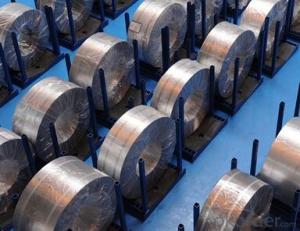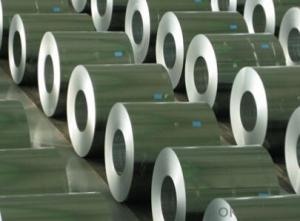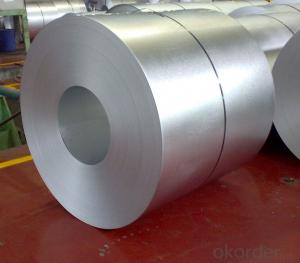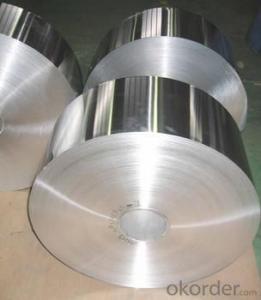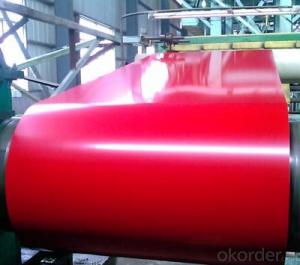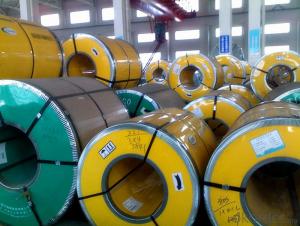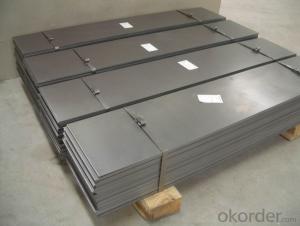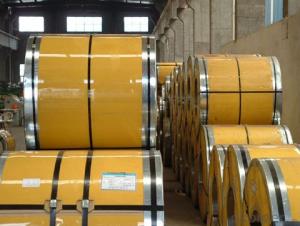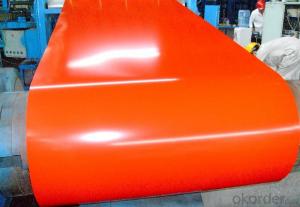Hot-dip Aluzinc Steel Building Roof Walls 615-009-01
- Loading Port:
- Tianjin
- Payment Terms:
- TT OR LC
- Min Order Qty:
- 66 kg/m²
- Supply Capability:
- 11 kg/m²/month
OKorder Service Pledge
OKorder Financial Service
You Might Also Like
. Description of the Hot-dip Aluzinc Steel:
Hot-dip aluzinc steel structure is composed of aluminum-zinc alloy, consisting of 55% aluminum, 43% zinc and 2% at 600 ℃ silicon solidification temperature and composition, the entire structure is made of aluminum - iron - silicon - zinc, to form a dense quaternary crystals an alloy.
Hot-dip aluzinc steel has many excellent features: strong corrosion resistance, is three times the pure galvanized sheet; zinc surface with beautiful flowers, can be used as a building outside board.
Applications of hot-dip aluzinc steel:
1)Building: roof, walls, garages, soundproof walls, pipes and modular housing.
2)Automotive: muffler, exhaust pipes, wiper accessories, fuel tank, truck boxes, etc.
3)Appliances: refrigerator back, gas stove, air conditioners, microwave oven, LCD frame, 4)CRT-proof band, LED backlight, electrical cabinets, etc.
5)Farm: barn, sheds, silos, piping and other greenhouse.
6)Other: breaking heat insulation cover, heat exchangers, dryers, warm water, etc.
Although steel had been produced in bloomery furnaces for thousands of years, steel's use expanded extensively after more efficient production methods were devised in the 17th century for blister steel and then crucible steel. With the invention .
2.Main Features of the Hot-dip Aluzinc Steel:
• Excellent corrosion resistance
• High temperature oxidation resistance
• High hot reflectance
• Good manufacturability
•Beautiful appearance
•Surface coating
•Cost-effective
3.Hot-dip Aluzinc Steel Images
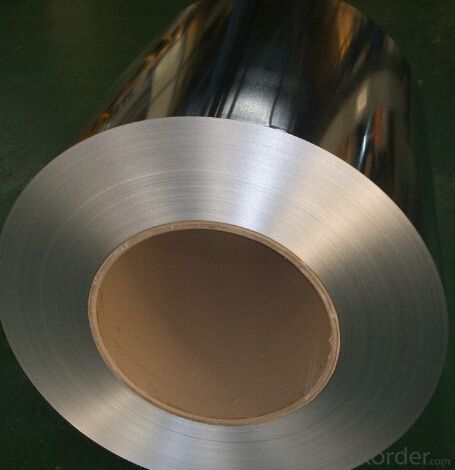
4.Hot-dip Aluzinc Steel Specification
AVAILABLE SPECIFICATION
HOT-DIP ALUZINC STEEL COILS | |
THICKNESS | 0.16mm-3.5mm |
WIDTH | 1250mm MAX |
COATING MASS | |
SPANGLE | Regular Spangle, Minimized Spangle, Zero Spangle |
SURFACE TREATMENT | Chromated / non-chromated, Oiled / non-oiled, Anti Finger Print |
COIL INNER DIAMETER | 508mm or 610mm |
5.FAQ of Hot-dip Aluzinc Steel
We have organized several common questions for our clients,may help you sincerely:
1.What advantages does your company have?
Cement : Annual capacity of 400 million tons, No. 1 in the world
Fiberglass: Annual capacity of 1 million tons fiberglass, No. 1 in the world.
2.What advantages do your products have?
Firstly, our base material is of high quality, Their performance is in smooth and flat surface,no edge wave ,good flexibility.
Secondly, high quality zinc ingoats, 97.5% zinc,1.5% silicon,1% others, the same zinc coating measured by metal coating thickness or by zinc weight
Thirdly, high precision: Tolerance strictly according to ASTM or JISG standard even more rigid.
We have full stes of testing equipment(for t best, cupule,chromatism,salt spray resistance, etc) and professional engineers.
3.Could you let me approach about your company in Dubai?
Located at Jebel Ali Free Zone in Dubai, CNBM Dubai Logistics Complex is adjacent to -Jebel Ali sea port-the largest port in UAE and Al Maktoum Airport-
- Q: What are the different surface coatings available for steel strips to improve chemical resistance?
- There are several surface coatings available for steel strips to enhance chemical resistance. Some common options include epoxy coatings, polyurethane coatings, fluoropolymer coatings, and galvanized coatings. These coatings provide a protective layer that prevents direct contact between the steel surface and chemicals, thereby reducing the risk of corrosion and damage to the steel strips.
- Q: What are the packaging options available for steel strips?
- There are several packaging options available for steel strips depending on the specific requirements and preferences of the customers. Some common packaging options include: 1. Coils: Steel strips can be packaged in coils, which are tightly wound rolls of steel. Coils offer a compact and efficient packaging solution and are commonly used for transportation and storage purposes. 2. Spools: Steel strips can also be packaged on spools, which are cylindrical devices used for winding and storing the strips. Spools provide ease of handling and can be used for various applications, such as in wire manufacturing or for precision cutting. 3. Reels: Reels are similar to spools but are usually larger in size. They are commonly used for heavy-duty applications where larger quantities of steel strips need to be packaged or when the strips are intended for use in industrial machinery. 4. Bundles: Steel strips can be packaged in bundles, where multiple strips are bundled together using steel straps or other binding materials. Bundles are often used for larger or longer steel strips and provide stability and protection during transportation. 5. Pallets: Steel strips can be packaged on pallets, where multiple coils, spools, or bundles are stacked and secured together. Pallets offer convenience for handling and can be easily transported using forklifts or other equipment. Additionally, packaging options can also include options for protective measures such as shrink-wrapping, plastic covers, or wooden crates to ensure the safety and integrity of the steel strips during storage and transportation. The choice of packaging option will depend on factors such as the size and shape of the steel strips, the intended usage, and the specific requirements of the customer.
- Q: What are the future trends in steel strip manufacturing?
- Some future trends in steel strip manufacturing include the adoption of advanced automation and robotics technology to enhance production efficiency and reduce costs. Additionally, there is a growing focus on sustainable manufacturing practices, such as using recycled materials and implementing green energy solutions. Industry 4.0 technologies, such as the Internet of Things (IoT) and big data analytics, will also play a significant role in optimizing operations and improving quality control. Furthermore, there is a shift towards developing high-strength steel strips to meet the increasing demand for lightweight materials in sectors like automotive and aerospace.
- Q: What are the factors that affect the hardness of steel strips?
- There are several factors that can affect the hardness of steel strips. 1. Carbon content: The carbon content of steel plays a significant role in determining its hardness. Higher carbon content generally leads to increased hardness. 2. Alloying elements: The presence of certain alloying elements such as chromium, manganese, and molybdenum can also impact the hardness of steel strips. These elements can form carbides and increase the overall hardness of the material. 3. Heat treatment: The heat treatment process, including quenching and tempering, can greatly influence the hardness of steel strips. Quenching involves rapid cooling of the material, while tempering is a subsequent heating process that helps to increase toughness and reduce brittleness. 4. Cooling rate: The rate at which the steel strip is cooled during the manufacturing process can affect its hardness. Rapid cooling, such as through water quenching, can result in a harder material compared to slower cooling methods. 5. Grain size: The size of the grains within the steel structure can impact its hardness. Smaller grain sizes generally lead to increased hardness due to a more uniform distribution of carbon and alloying elements. 6. Impurities: The presence of impurities, such as sulfur and phosphorous, can negatively affect the hardness of steel strips. These impurities can form brittle compounds and reduce the overall hardness of the material. 7. Cold working: Cold working, such as rolling or drawing, can increase the hardness of steel strips. This process deforms the material and introduces dislocations, which in turn increase the strength and hardness. 8. Composition and microstructure: The composition and microstructure of the steel, including the presence of phases such as martensite, ferrite, and pearlite, can influence its hardness. These phases form during cooling and can contribute to different levels of hardness. It is important to note that the hardness of steel strips is often a trade-off with other properties such as toughness and ductility. Therefore, finding the right balance between hardness and other desired characteristics is crucial for specific applications.
- Q: What are the surface finishing techniques for steel strips?
- Some common surface finishing techniques for steel strips include galvanization, electroplating, painting, and powder coating. These techniques are used to enhance the appearance, durability, and corrosion resistance of the steel strips.
- Q: What are the different sizes and dimensions of steel strips?
- Steel strips come in a variety of sizes and dimensions depending on their intended use and application. The thickness of steel strips typically ranges from 0.1 mm to 6 mm, with variations available within this range. The width of steel strips can vary from 10 mm to 1500 mm, again with options within this range. Lengths of steel strips can vary depending on production requirements, but they are often available in standard coil lengths of up to 30 meters or more. The dimensions and sizes of steel strips are determined by factors such as the industry they are used in, the specific application or manufacturing process, and customer requirements. It is important to consult with steel suppliers or manufacturers to determine the exact sizes and dimensions available for a particular steel strip.
- Q: How are steel strips processed for soldering?
- Steel strips are processed for soldering through a series of steps to ensure proper adhesion and a strong bond. Firstly, the steel strips are cleaned thoroughly to remove any dirt, oil, or other contaminants that could interfere with the soldering process. This is usually done by using a degreasing agent or a solvent to ensure a clean surface. Next, the steel strips are typically roughened to create a more suitable surface for soldering. This can be done through various methods such as sanding, brushing, or using a chemical etching agent. The goal is to create small scratches or grooves on the surface, which provides more surface area for the solder to adhere to. After roughening, a flux is applied to the steel strips. The flux serves multiple purposes - it removes any remaining contaminants, prevents oxidation during the soldering process, and promotes the flow of solder. The flux can be in the form of a liquid or a paste and is usually applied using a brush or a dipping process. Once the flux is applied, the steel strips are ready for soldering. A soldering iron or a soldering machine is used to heat the strips and melt the solder. The solder is then applied to the joint or the desired area, where it flows and bonds with the steel strips. The heat from the soldering process should be carefully controlled to prevent overheating or damaging the steel strips. Finally, after soldering, the steel strips may undergo a cleaning process to remove any residual flux or soldering residues. This is typically done using a cleaning agent and can be followed by rinsing with water or using a solvent. The cleaned steel strips are then inspected for quality and can be further processed or used in various applications as required. Overall, the process of preparing steel strips for soldering involves cleaning, roughening, applying flux, soldering, and cleaning again. These steps ensure a clean, well-prepared surface for soldering and result in a strong and reliable bond between the steel strips.
- Q: What are the common thickness tolerances for steel strips?
- The common thickness tolerances for steel strips typically range from +/- 0.001 to +/- 0.005 inches, depending on the specific industry standards and requirements.
- Q: How do steel strips contribute to weight reduction in various applications?
- Steel strips contribute to weight reduction in various applications by being lightweight yet strong. They provide a high strength-to-weight ratio, allowing manufacturers to use thinner and lighter steel strips without sacrificing structural integrity or performance. This reduction in weight can lead to improved fuel efficiency in transportation, increased payload capacity in aerospace, and overall cost savings in various industries.
- Q: How are steel strips joined together?
- Steel strips are typically joined together using various welding techniques, such as electric resistance welding, laser welding, or arc welding. These methods involve melting the edges of the steel strips and fusing them together to form a strong and durable joint.
Send your message to us
Hot-dip Aluzinc Steel Building Roof Walls 615-009-01
- Loading Port:
- Tianjin
- Payment Terms:
- TT OR LC
- Min Order Qty:
- 66 kg/m²
- Supply Capability:
- 11 kg/m²/month
OKorder Service Pledge
OKorder Financial Service
Similar products
Hot products
Hot Searches
Related keywords
